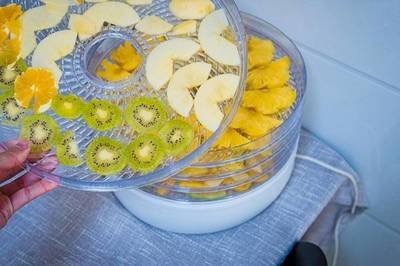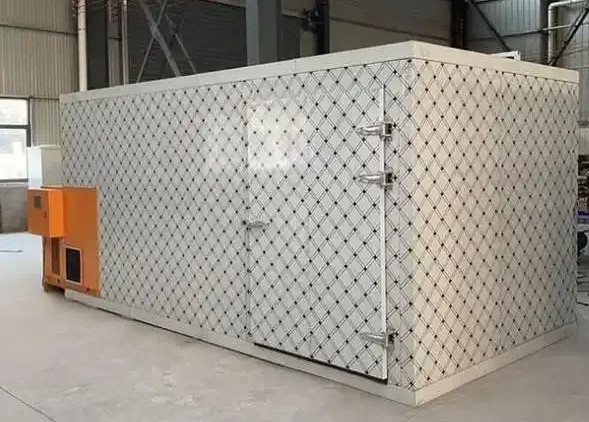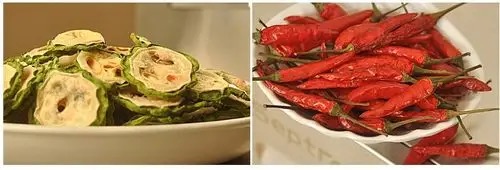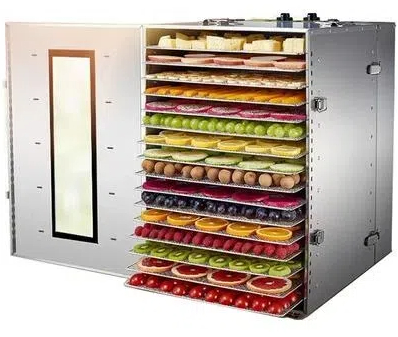
Content Menu
● Introduction
● Understanding Heat Pump Technology
>> How Heat Pump Dryers Work
● Benefits of Heat Pump Dryers for Food Processing
>> 1. Energy Efficiency
>> 2. Gentle Drying Process
>> 3. Versatility
>> 4. Environmentally Friendly
>> 5. Consistent Quality
>> 6. Reduced Risk of Over-Drying
● Comparing Heat Pump Dryers with Traditional Dryers
● Key Considerations When Choosing a Heat Pump Dryer
>> 1. Capacity
>> 2. Temperature Control
>> 3. Energy Efficiency Ratings
>> 4. Maintenance Requirements
>> 5. Brand Reputation
● Applications of Heat Pump Dryers in Food Processing
>> 1. Fruit Drying
>> 2. Vegetable Drying
>> 3. Herb Drying
>> 4. Meat Drying
● Operation Tips for Maximizing Efficiency
● Conclusion
● Frequently Asked Questions
>> 1. What types of foods can be dried using a heat pump dryer?
>> 2. How long does it take to dry food using a heat pump dryer?
>> 3. Are heat pump dryers suitable for small-scale operations?
>> 4. What maintenance do heat pump dryers require?
>> 5. Can I use a heat pump dryer for industrial-scale food processing?
Introduction
In the world of food processing, drying is an essential step that helps preserve food, enhance flavors, and extend shelf life. As a manufacturer of food drying machines in China, we provide OEM services for international brands and wholesalers. This article will explore the various aspects of food drying machines, particularly focusing on heat pump technology, which has gained popularity for its efficiency and effectiveness. We will also discuss the advantages of using heat pump dryers in food processing, compare them to traditional methods, and provide insights into their operation.

Understanding Heat Pump Technology
Heat pump technology is a revolutionary method used in various applications, including heating, cooling, and drying. Unlike traditional dryers that expel hot air outside, heat pump dryers recycle the air within the system. This closed-loop system allows for energy-efficient drying by extracting moisture from the air and reusing the heat generated during the drying process.
How Heat Pump Dryers Work
1. Air Circulation: The dryer draws in ambient air, which is then heated using a compressor.
2. Moisture Extraction: The warm air circulates through the drum containing the food items, absorbing moisture.
3. Condensation: The moist air is then cooled down, causing the moisture to condense into water, which is collected in a reservoir or drained away.
4. Reheating: The cooled air is reheated and recirculated back into the drum to continue the drying process.
This cycle repeats until the desired moisture content is achieved in the food products.
Benefits of Heat Pump Dryers for Food Processing
1. Energy Efficiency
Heat pump dryers are significantly more energy-efficient than traditional drying methods. They consume less electricity by reusing heat instead of generating new heat for each drying cycle. This can lead to substantial cost savings over time.
2. Gentle Drying Process
The lower temperatures used in heat pump dryers help preserve the quality of food products. This gentle drying process minimizes nutrient loss and maintains flavor, color, and texture.
3. Versatility
Heat pump dryers can be used for a wide variety of food products, including fruits, vegetables, herbs, and meats. Their adjustable settings allow operators to customize drying parameters according to specific product requirements.
4. Environmentally Friendly
By consuming less energy and reducing waste through efficient moisture removal, heat pump dryers are a more sustainable option compared to conventional dryers.
5. Consistent Quality
Heat pump dryers provide consistent results across different batches of food products. The controlled environment ensures that each item receives uniform treatment during the drying process.

6. Reduced Risk of Over-Drying
With precise temperature control and humidity management, heat pump dryers significantly reduce the risk of over-drying food products, which can lead to undesirable textures and flavors.
Comparing Heat Pump Dryers with Traditional Dryers
| Feature | Heat Pump Dryer | Traditional Dryer |
| Energy Consumption | Low | High |
| Operating Temperature | Low (40-70°C) | High (80-100°C) |
| Moisture Removal | Efficient | Less efficient |
| Nutrient Preservation | High | Moderate to Low |
| Environmental Impact | Positive | Negative |
Key Considerations When Choosing a Heat Pump Dryer
When selecting a heat pump dryer for your food processing needs, consider the following factors:
1. Capacity
Choose a dryer with adequate capacity to handle your production volume. Larger capacities allow for bulk drying but may require more space.
2. Temperature Control
Look for models with adjustable temperature settings to accommodate different types of food products.
3. Energy Efficiency Ratings
Select dryers with high energy efficiency ratings to maximize savings on operational costs.
4. Maintenance Requirements
Consider the ease of maintenance and availability of parts when selecting a dryer model.
5. Brand Reputation
Research reputable brands known for their reliability and customer support in the food processing industry.
Applications of Heat Pump Dryers in Food Processing
Heat pump dryers are versatile machines that can be used across various sectors in food processing:
1. Fruit Drying
Fruits like apples, bananas, and berries can be effectively dried using heat pump technology. The gentle drying process helps retain their natural sweetness and nutritional value.
2. Vegetable Drying
Vegetables such as carrots, tomatoes, and peppers benefit from heat pump drying as it preserves their color and taste while extending shelf life.
3. Herb Drying
Herbs like basil, thyme, and oregano can be dried without losing their aromatic properties when processed in a heat pump dryer.
4. Meat Drying
Heat pump dryers are also suitable for dehydrating meats for jerky production or creating shelf-stable products without compromising safety or flavor.
Meat Drying
Operation Tips for Maximizing Efficiency
To get the most out of your heat pump dryer:
1. Pre-Treat Your Food: Some fruits may benefit from pre-treatment (like blanching) before drying to enhance color retention.
2. Cut Uniformly: Ensure that all pieces are cut to similar sizes for even drying.
3. Monitor Moisture Levels: Use moisture meters to check dryness levels periodically.
4. Regular Maintenance: Clean filters and check seals regularly to maintain efficiency.
5. Experiment with Settings: Different products may require different settings; don't hesitate to adjust as necessary based on results.
Conclusion
Investing in a heat pump dryer can significantly enhance your food processing operations by providing energy-efficient, gentle drying solutions that preserve product quality while reducing costs. As a leading manufacturer of food drying machines in China offering OEM services, we are committed to delivering high-quality products that meet international standards.
By understanding the benefits and considerations outlined in this article, you can make informed decisions when selecting a heat pump dryer for your business needs.

Frequently Asked Questions
1. What types of foods can be dried using a heat pump dryer?
Heat pump dryers are versatile and can dry various foods such as fruits, vegetables, herbs, meats, and even dairy products.
2. How long does it take to dry food using a heat pump dryer?
Drying times vary based on the type of food and thickness but generally range from several hours to over 12 hours for larger items.
3. Are heat pump dryers suitable for small-scale operations?
Yes, there are compact models available that are ideal for small-scale operations or businesses with limited space.
4. What maintenance do heat pump dryers require?
Regular cleaning of filters and checking drainage systems are essential maintenance tasks to ensure optimal performance.
5. Can I use a heat pump dryer for industrial-scale food processing?
Absolutely! Many manufacturers produce large-capacity heat pump dryers designed specifically for industrial applications.












